Keep Reading
The Hidden Costs of ‘Doing It All’ & Why This Entrepreneur Opted Out
In this conversation, Paige Brunton returns with a more personal take on life as a digital entrepreneur living abroad. We’re talking guilt-free boundaries, “done is better than perfect” energy, tracking your freedom number, getting ruthless with your to-do list, and why ROI isn’t always about revenue. She’s pulling back the curtain on the intentional choices […]
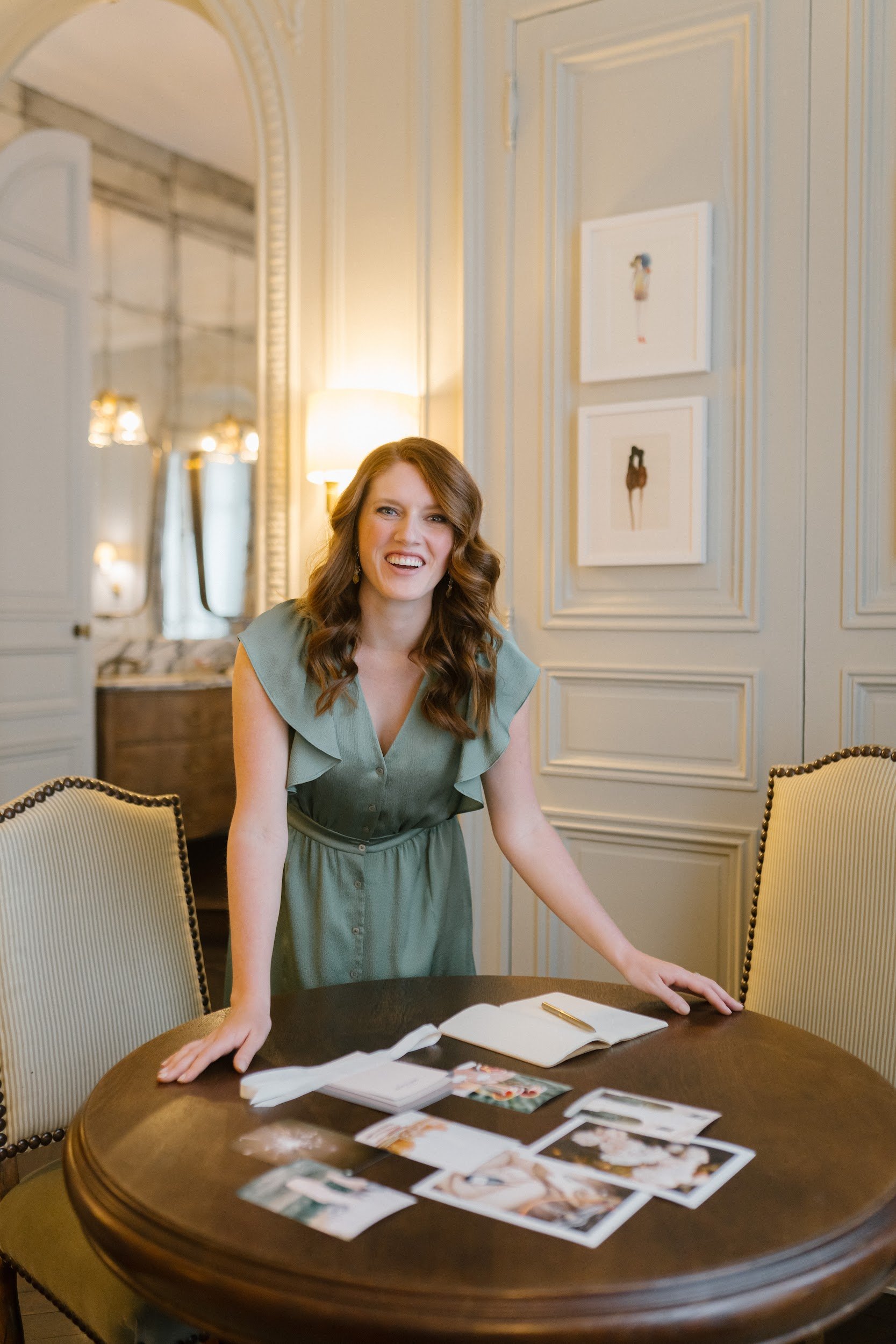
Paragraph
In this conversation, Paige Brunton returns with a more personal take on life as a digital entrepreneur living abroad. We’re talking guilt-free boundaries, “done is better than perfect” energy, tracking your freedom number, getting ruthless with your to-do list, and why ROI isn’t always about revenue.
She’s pulling back the curtain on the intentional choices that help her avoid burnout, make peace with not doing it all, and strategies to finally let yourself enjoy the life you’re building.
If you’ve ever wondered when the “balance” part of work-life balance actually kicks in—this episode is for you. Spoiler: It’s not about having it all. It’s about knowing what’s actually worth having.
APPLE PODCASTS | SPOTIFY
Press play for the full interview or keep reading below!
- [00:00]: Welcome Back and Life in Switzerland
- [03:00]: Navigating Business Across Borders
- [06:00]: Building a Sustainable Business Model
- [09:01]: Marketing Strategies Beyond Social Media
- [11:52]: Finding Joy in Business
- [15:01]: Annual Planning for Success
- [17:48]: Adapting to Life’s Seasons
- [21:01]: Overcoming Boredom and Loneliness
- [24:45]: Building Friendships in New Places
- [27:18]: Time Management Strategies for Personal and Professional Life
- [29:29]: Setting Boundaries for Balance
- [32:45]: Work-Life Structure and Flexibility
- [39:53]: Outsourcing and Delegating Tasks
- [44:25]: Financial Freedom and Business Growth
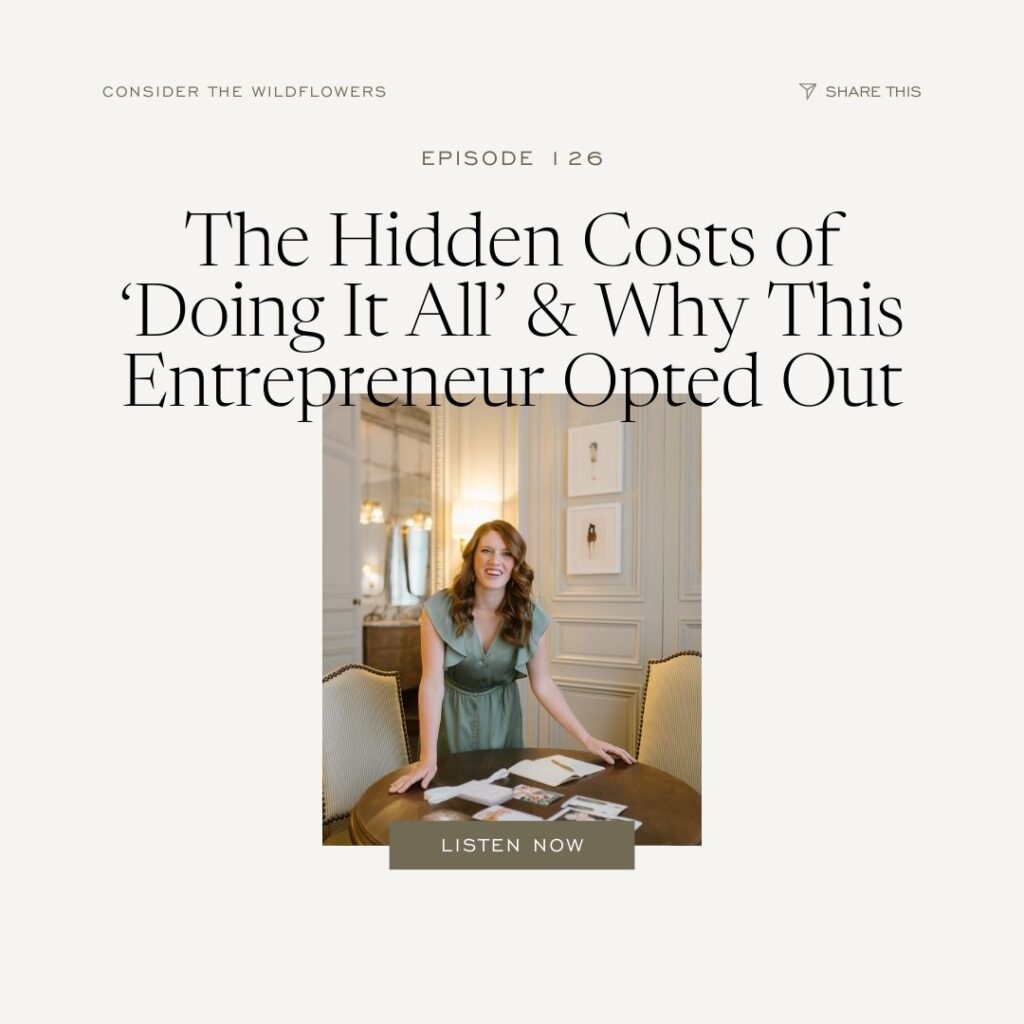
Paige Brunton on Life in Switzerland, International Moves, and Running a Business Across Borders
Life is beautiful. It’s wintertime as we’re recording this, so the ski hills are open. Honestly, I haven’t accomplished that much work so far this year—there’s been a lot of skiing involved.
Yeah, I’m from Canada, and if you don’t have a winter hobby, you end up hating winter—and winter lasts for half the year. You really need a winter activity, and skiing was mine. But I didn’t grow up in a prime skiing area. People think of Canada and imagine amazing skiing, but honestly, that’s mostly British Columbia—places like Whistler. I was from Toronto, which isn’t a major ski destination. Now, living in Switzerland with world-renowned ski hills practically at my doorstep, I’m just beyond thrilled.
We’ve been here a year and a half, almost two years.
Okay, long story short: I was in college in the U.S., at Ole Miss, and I met a German guy at a bar. I ended up moving to Europe to be with him. We hopped around a few different countries, trying to find the right place that would work well for both of us. We lived in London right before Switzerland, but it wasn’t ideal for his work. Moving to Switzerland ended up being perfect for both our personal lives and careers. We finally found the right country, and we’re not moving again.
In the past 10 years, I’ve lived in five countries. I’ve been running my business during that time. Maybe not quite the full 10 years—just a little under.
It was not easy.
You’d think it would be simple—you have a business, so you can just bring it with you. But no, it’s complicated. Every move depended on the specific countries involved, and moving both personally and professionally is a whole different level of challenge.
If I had advice for anyone thinking about it, I’d say seriously consider just travelling for a few months and keeping your business based in one place. Moving a business and your life at the same time is an administrative nightmare. It probably takes up about half of my working hours during the year I’m relocating, just handling logistics.
Honestly, I wouldn’t recommend doing it unless you absolutely have to. It’s not easy, and you’ll need experts—legal and tax advisors—in every country you touch. It’s tough.
Building a Sustainable Business: Courses, Creativity, and Staying Energized Over Time
So, I teach people how to become website designers. I have a few online courses, and that’s the primary focus of my business right now.
You asked an interesting question about staying in your business and continuing to actually like it—that’s something I’ve had to figure out. I have a beautiful business model; honestly, I couldn’t ask for better. But sticking with something for years without getting bored has been a challenge.
For me, the key has been learning. I love learning and taking on new challenges. Even though I’m running the same business and talking about similar topics, if I can find a new “nut to crack”—whether that’s improving our launches, building out additional offers, or adding complementary topics—it keeps me energized.
Alternatively, diving into new marketing strategies has helped, too. For example, I started a YouTube channel, and learning that new platform has brought me a lot of joy over the past couple of years. So I’ve found that continually learning and stretching myself is really important to staying engaged in my business.
I think I’ve been doing courses for about seven or eight years now.
In terms of structure, we use open and closed enrollments and typically do one launch per quarter. There was one year where we launched every other month—about five launches—and we skipped November and December. But generally, launching once a quarter works best for us. It’s the right rhythm, both for our internal team and probably for our audience too.
There was one summer, right after the pandemic, when all my friends got married in the same year. We had seven international weddings to attend, flying all over the world from May through October. It was chaos, and we didn’t launch for a few months. I realized then that taking that much time off from launching wasn’t a good idea for the business. That experience confirmed that once a quarter is the perfect cadence for us.
We do have some evergreen funnels, so we occasionally sell courses between launches, but the majority of our sales happen during the live launches when we create a lot of excitement and engagement.
Choosing the Course Model: Why It Works and Why I’ve Stuck With It
Okay, so I was a web designer for many years, doing custom client projects. Eventually, I built a big enough audience that I was getting more inquiries than I could handle as just one person.
At that point, the most obvious solution—the path most people seemed to be taking—was to move to an agency model. But I knew, with every fiber of my being, that I had less than zero interest in managing a big team. Running an agency is a very people-intensive business model, and that just didn’t sound like joy to me.
I did consider templates, and I did consider courses. Honestly, I’m not sure exactly why I chose courses over templates—it just felt like the right option at the time. And interestingly, I’ve stuck with the course model all this time.
Over the years, I’ve seen so many people pivot to different models—memberships, high-ticket programs, low-ticket offers, digital shops—you name it. Every single year, there’s a new trend on the internet about the best way to run your business.
For a while, memberships were all the rage. Everyone was doing them until people realized they require constant content creation, they’re always “on,” and it’s hard to take a break. Plus, they need a huge amount of audience growth to stay sustainable. I still think memberships can be great for the right business in the right situation, but they’re definitely not for everyone.
For me, sticking with the course model has been key to not burning out. I’ve always been very conscious of the downsides of every other option—and I’ve made it a point not to chase every shiny new trend. In fact, insulating myself from even seeing a lot of those shiny objects has been crucial.
Sustainable Growth Without Social Media: How Paige Brunton Built My Business Off the Grid
There’s never been a time I’ve wanted to shut down the courses, but I have definitely had moments where I thought, “Ooh, maybe I could add something else.”
To answer your first question—how I insulate myself from the noise—I’m not on social media. I’m not on a lot of email lists. I don’t follow what others in my industry are doing. I’m very selective about the content I consume. If I need to learn about something specific, I’ll go find a podcast episode or resource on that topic, but I’m not browsing passively.
I’m also not on Facebook regularly. I use a Chrome extension called News Feed Eradicator, which removes the entire newsfeed so I can log in for business purposes, like checking in on groups, without getting distracted. So, I still have a Facebook account because we need it for work, but I don’t use it daily. Also, I don’t have Instagram on my phone, and I haven’t posted there in years.
Basically, I’m off the grid when it comes to social platforms—and I’m really happy about that.
I do think that’s contributed to my success. People know me for one thing, and there’s no confusion about what I do. I’ve done the same thing for years. So when someone thinks, “I want to be a website designer,” or “I want to learn how to build Squarespace websites,” they immediately associate that with me.
In terms of growing my audience without relying on typical channels like social media, which I know is a big question in the course world, I started with blogging. I teach two main courses: one on how to use Squarespace, and one on how to build a web design business (which isn’t platform-specific).
In the beginning, I wrote a ton of blog posts—things like “how to do X on Squarespace,” examples of Squarespace websites, and general website design tips. People would find those articles through a search, which led to email list sign-ups. That’s how I grew for a long time: SEO and email.
I did try Instagram marketing at one point, but I didn’t enjoy it. I’d catch myself scrolling, and I realized it wasn’t making me feel good—seeing what others were doing, comparing success, and just the general vibe. Around the same time, more research started coming out about how social media can be harmful, and I thought, “Yeah, I don’t need this.”
So when I stopped using Instagram, it wasn’t a huge hit to the business because the blog and email list were already driving most of the course sales.
Later on, I wanted to experiment with another marketing strategy. We tried ads briefly, but I didn’t love that either. Then we started a YouTube channel and launched an affiliate program. To this day, those are still our three main marketing strategies: long-form YouTube videos, affiliate marketing and blogging.
All of these lead to the email list, which is still the central hub. I haven’t even gotten into YouTube Shorts yet. I tend to focus on doing one thing really well before moving on to the next.
Staying True to What Works: How I Filter Out the Noise and Focus on What Matters
Who’s even saying these things? I don’t hear that kind of chatter.
I think that’s the difference—it’s just not in my world. I’ve really insulated myself from it. I’m not on Instagram, I don’t scroll, and I’ve intentionally limited whose opinions I allow into my business and life.
I totally get what you’re saying, though—sometimes people can’t understand when you choose to build a business that feels counter to the mainstream model. People are like, “Wait, you’re not doing Instagram? You’re not doing Shorts? You’re not on social media at all?” But honestly, I think when you remove yourself from that space, you start to realize you don’t actually need to be there to be successful.
And sure, if you’re running ads on Instagram, then yes, not being active there could make it harder. We tried that briefly. Our Instagram started growing, but I wasn’t even posting or showing up on the platform, and I thought, This isn’t great—I’m spending money on something I’m not even engaging with. I think if you’re running ads on a platform, you need to be there and be part of the experience. Otherwise, there’s a disconnect.
But for me, the deeper question is: what actually brings me life? What actually brings me joy? That’s how I stay in tune with my business and with myself. I regularly check in on what I enjoy doing—what energizes me, what drains me—and I build my business around those answers.
For example, I love to ski. I know how much money I want and need to make. I know the kind of lifestyle I want to live. So I’ve structured things around that. I think you really do have to be honest with yourself about what success looks like for you, and then protect that vision fiercely.
It’s not perfect every day, of course—but I’ve worked hard to build a business I actually like running. That’s what keeps me going.
Annual Planning and Honest Reflection: The Keys to Sustainable Success
I think one of the reasons I’ve been able to stay in tune with what I want is because I’ve built my business in a way that’s pretty unusual. I’ve had mastermind friends say, “What is this girl doing?”—but in a good way. And what I’ve seen happen over and over again is that people build really successful businesses, but then they end up hating them. They burn it all down because it wasn’t built in alignment with what actually brings them joy. I’ve never had that desire, and I consider that a huge win.
My husband once told me, “You are almost physically incapable of doing something you don’t want to do.” And, honestly, that’s pretty true. I just have a strong sense of what brings me joy and what doesn’t, and I pay close attention to that.
Again, it goes back to insulating myself from the noise. I’ve noticed, for example, there are YouTubers and influencers I really like—but when I watch them, I end up spending way more money. I started wanting things I didn’t even know existed before I saw them. That’s a big realization: you don’t even want something until you see it. So if you can avoid seeing it in the first place, it helps you stay aligned with what actually matters to you.
Now, if your business depends on social media for leads, I’m not saying quit tomorrow. But I do have a YouTube video on how to market your business without social media, which a lot of people have reached out to me about.
The other thing that really helps me stay in tune with what I want is my annual planning process. Every year, I take a few days—completely alone—and go to a hotel with just my laptop and a giant Google Doc. I ask myself brutally honest questions like: What did you enjoy this year? What didn’t you enjoy? What’s working? What’s not working?
No distractions, no other people—this is my time to reflect and get clear. A business friend once asked if we could do annual planning together, and I was like, “Nope, sorry!” I need the space and quiet to really think.
Over the years, I’ve gotten better at recognizing patterns—what shows up consistently in the “I enjoyed this” column, and what shows up in the “I didn’t enjoy this” one. Then I make adjustments, slowly steering everything closer to what lights me up.
Of course, during the year, I sometimes get pulled off track. I’ll look back and think, Why did I say yes to that? But those annual planning days are what ground me and help me recalibrate.
Seasons of Life, Same Business Model: Why Simplicity Has Worked for Me
Honestly, my business hasn’t had to shift much through the different seasons of my life because it’s set up in a pretty simple way.
To be clear, it’s not overly simplistic—I work full-time hours, and I’m definitely not just chilling on a beach. Courses aren’t truly passive income; there’s a lot of work behind the scenes that makes it look that way. But the structure of my business is pretty straightforward: a few consistent marketing strategies, a few launches a year, and consistent course updates.
I haven’t had children yet, so that could definitely change things in the future. I’m sure kids would completely rock my world in new ways. But so far, no matter what’s been happening—moving countries, big life changes—I’ve been able to manage the business because of its simple foundation.
There have been years where I accomplished more and years where I accomplished less, depending on what was happening in my personal life. For example, in 2019, I took about three months off throughout the year, just traveling around Europe. The business still ran really well without me being super hands-on.
Then in 2020, with the pandemic, I was at home a lot more and thought, Well, what else am I going to do? So I worked a ton of hours. But interestingly, we didn’t accomplish significantly more than we had the year before when I took all that time off. That experience taught me a big lesson: having limited time actually makes you way more conscious of what’s truly important.
When you have too much time, you can end up creating “make work” projects—little tweaks and tasks that don’t actually move the needle.
For my business, I’ve realized there are really just a few key things that always need to happen: Keep the main marketing strategies running consistently. Execute sales and launches. Update and improve the courses.
If those three things are happening, the business stays strong.
Paige Brunton on Dealing With Boredom and Finding Connection as a Solo Business Owner
That’s a good question. Do I ever get bored in business? Yes—definitely. For example, re-recording the same course content for the seventh time is not thrilling. That’s one of the downsides of having a tech-based course—it needs frequent updates. So yeah, that part can be boring.
How do I deal with it? Honestly, I just accept that it’s part of the job. If something can be delegated to a team member, amazing. But otherwise, I remind myself that I have a beautiful business, and if this is the one unexciting task I need to do, it’s worth it.
That said, I have experimented with adding variety. I ran a higher-ticket coaching program for a quarter once. It involved weekly calls, which was great to try—but ultimately, I realized it wasn’t for me.
I’ve also dabbled in different topics. I briefly talked about passive income, but decided not to go too far down that road. What did feel aligned was creating content around growing an audience, which is something my students really need—especially web designers who want to sell templates but haven’t built an audience yet. So I created a course on that.
Little pivots like that help ease the boredom. I love creating new things; maintaining old content, not so much.
As for loneliness—whether in business or life—I think the fact that I’ve kept close friendships over the years has made a big difference. I still have the same group of girlfriends from university, even though I haven’t lived in Canada for nearly 10 years. Having strong friendships helps buffer against loneliness, especially when I move to a new place.
Of course, moving does mean having to build new local friendships. I’m lucky to have my husband, and we love spending time together—but I still recognize that making new friends in a new city is on me.
There was one weekend when he was away visiting family, and I was alone in Zurich for the first time. I realized, Wow, I don’t have someone to just go grab cocktails with right now. We had some couple friends, but I didn’t really want to hang out with them solo. I thought, Okay, I need girlfriends.
So I got strategic. I used Bumble BFF (the friend version of the Bumble dating app), even though I’m not a big texter. I messaged a bunch of girls saying something like, “Hey! I’m organizing a group of girls to get cocktails at this place, this time. I hate messaging—just show up if you’re interested.”
To my surprise, about 20 girls responded with enthusiasm. It was such a great reminder that everyone on those apps is also looking to meet people. Especially in cities with lots of internationals—like Zurich or London—everyone is open to making new friends. It’s like the first week of university all over again.
I will say, I haven’t become close with many locals in the UK or Switzerland. Most of my friendships have been with other expats—because locals already have established friends and family. That’s totally okay. I’ve just learned to accept that and be intentional about building community where I can. Sometimes you just have to be the one who organizes it.
Saying No Without Guilt: What I’ve Learned About Time, Priorities, and Boundaries
I think the biggest lesson I’ve learned about time management is the importance of doing fewer things, but doing them better.
It’s also been really helpful to accept that I’m not going to do everything well all the time. At different points in life or business, priorities shift—and I try to be very intentional about recognizing that. In the early days of building my business, I would actually write out my priorities every single day. At that point, the top priority was clear: build the business and generate income. Everything else—like health, relationships, and friendships—took a backseat. And I was okay with that, because I understood it was a season.
Once the business stabilized, I was able to reallocate focus. For example, if my marriage needed more attention, that became the priority. If my husband wanted to go for a walk in the middle of the day or suggested we go out for dinner, I could say no to work without guilt, knowing that nurturing our relationship was the most important thing in that moment.
The same was true for my health. For a long time, I didn’t go to the gym or exercise regularly, and I didn’t beat myself up over it. I just accepted that it wasn’t a current priority, and trusted that I’d revisit it when the time was right—maybe a year or two down the line. That mindset has helped me avoid burnout and stay grounded.
When it comes to maintaining balance, I’ve said no to a number of things along the way. Social media, for one—I’m no longer active on Instagram or other platforms. I also watch very little television. At one point, I was spending close to an hour a day reading the news, and I realized it was just making me miserable. So now, I stay informed enough to vote and engage with important issues, but I don’t immerse myself in the news cycle.
Another boundary I’ve had to set is around relationships. Because we’ve moved so often, we have friends all over the world—which is beautiful, but there was a stretch of time when we had guests almost every weekend. It started to bleed into my workweek, and I realized it was too much. So now, we’re more intentional about who we host. We say yes only when it’s someone we truly see as a long-term friend.
Travel is another area where I’ve gotten clear. Living in Europe, it’s tempting to say yes to every opportunity, event, or retreat—but I’ve learned to say no unless it’s a full-body yes. In fact, after the pandemic, I went four years without attending a single conference or in-person event in the U.S. It wasn’t until last year that I finally went to one.
All of this has been about being really thoughtful with my time, knowing what matters in each season of life, and giving myself permission to say no when something doesn’t serve the bigger picture.
Paige Brunton’s Boundaries That Evolve: Paying Attention to What Isn’t Working
I think I tend to revisit my boundaries when I start to notice something’s off—when I’m feeling frustrated or when sitting down to work feels unusually difficult. That’s usually my signal to pause and reflect on what’s going on, and to start actively looking for solutions instead of just accepting that something’s a problem.
For example, there was a time when we were hosting guests almost every weekend, and it became overwhelming. I talked to my husband and said, “We need a guest ban. One guest per month max.” That became a hard boundary for us. And when we first moved to Switzerland, I actually implemented a six-month guest ban. I said, “No guests at all for six months.” We needed that time to get settled and to build a life in our new home.
Because the truth is, if you’re hosting or traveling every weekend, you can’t build roots where you are. You need space and stillness to create community and rhythm in a new place.
So while I definitely reflect on things more intentionally during my annual planning, I also stay responsive throughout the year. If I’m noticing consistent frustration or friction, that’s usually my cue to reevaluate something and set or adjust a boundary.
Recognizing the Signs: When Frustration Means It’s Time for a Reset
I usually revisit my boundaries when I start to feel something is off—like when I’m unusually frustrated, or sitting down to work feels heavier than it should. That’s my cue to pause, take a step back, and ask myself what’s going on. I try not to just accept that frustration as normal, but instead treat it as a signal to explore what needs to shift and find a solution.
One example: there was a time when we were hosting guests nearly every weekend, and it became overwhelming. I sat down with my husband and said, “We need a guest limit—one weekend a month, max.” That became a firm boundary. And when we first moved to Switzerland, I took it even further and set a six-month guest ban. No visitors, period. We needed that time to settle in, get grounded, and start building a real life in our new home.
Because the truth is, if you’re constantly hosting or traveling, you don’t leave enough space to root yourself where you are. You need stillness to form meaningful routines and connections in a new place.
While my annual planning helps me be more intentional about boundaries, I also stay responsive throughout the year. If I find myself consistently feeling off-track or stretched too thin, I know it’s time to reassess—and usually, a boundary needs to shift.
Presence Over Perfection: How Paige Brunton Uses Asana to Stay Focused and Let Go
Totally. Everything—personal and work-related—goes into Asana. It’s all in there. That’s one of the biggest ways I stay present in my personal life, even when there’s always more to do for work.
For example, if my husband and I go for a walk, I don’t bring my phone, I don’t bring keys—I bring nothing. I just want to be present. But if I think of something work-related while we’re out, I’ll ask him to text me a reminder. Later, I’ll move that into Asana. Or if I’m in bed and I suddenly remember something, I’ll quickly add it to Asana on my phone. If it’s in Asana, I know it’ll get done. If it’s not, there’s a good chance I’ll forget about it.
I do have the app on my phone, so it’s easy to add things whenever they come to mind. That’s what helps me mentally disconnect—because I know I won’t lose anything important just because I’m not actively working on it.
As for transitioning from work mode to life mode… I honestly don’t have a process. There’s no routine. I just close my laptop and move on—make dinner, go for a walk, whatever comes next. Maybe I should have a wind-down ritual, but right now, it’s literally just shutting the computer and shifting gears. That’s it.
From Admin Help to Pre-Cooked Meals: What I’ve Outsourced and Why
Team-wise, I have a small but solid group of people helping me right now. Let me think—there are about three or four regular team members. We have support for video editing, customer service, bookkeeping, content assistance, and course launch tech. That’s the core of the work-side support.
Most of them are contractors, and their hours vary depending on their roles and what’s needed at any given time. I also recently brought someone on specifically to help with general admin. Honestly, I probably should have done that a long time ago—it was taking up a whole day of my week.
It’s not necessarily big tasks either; it’s all the small, random things. Things like signing contracts, gathering documents for taxes, giving feedback to a video editor on new branding, or pulling together behind-the-scenes photos from my phone for a launch. Just a lot of little tasks that don’t move the needle in a major way but have to get done. So now I have someone helping with all of that—kind of like an executive assistant—and it’s been such a relief.
On the home front, we don’t cook. Neither my husband nor I enjoy it, and for years we used HelloFresh. I still think it’s great. But recently, we found something even better for our lifestyle—it’s basically the same idea, but the meals are already cooked. They’re frozen, delivered, and actually healthy. My husband’s cousin is a nutritionist, and when she visited, we asked her to check the ingredients. She looked at it and said, “This is very healthy.” That was all I needed to hear.
I did have a moment of guilt—like, Can I really just stick something in the microwave and call that dinner? Shouldn’t I at least chop a vegetable? But then I realized that guilt was based on societal pressure, not personal values. If it’s healthy, it tastes good, and we both don’t enjoy cooking, then why wouldn’t we do it?
There was even a point where I went back to HelloFresh for a bit, but then I hit a week where I didn’t even have time to cook the HelloFresh meals. That’s when I accepted it fully. I work very intensely—when I sit down, I’m all in. So by the time dinner rolls around, I’m starving and completely uninterested in prepping or cooking a meal for 40 minutes.
So yeah, I’ve just learned to let go of expectations that don’t serve me. It’s about finding what works for our life right now and making choices that support our priorities.
When Goals and Time Don’t Match—And What I Did About It
I love a budget. That’s another thing we probably have in common. And honestly, in the beginning, I did everything myself for a long time—especially the things I didn’t enjoy—because the money just wasn’t there yet. I wasn’t about to spend money I didn’t have.
Instead, I slowly worked my way up to outsourcing. It started small—HelloFresh was one of the first upgrades. At first, even that felt a bit excessive. But once we tried it, I realized how helpful it was. And with a business, there’s a trade-off: if I’m not spending an hour cooking, I can use that time to work—and often make that money back.
That’s where it becomes important to get really conscious about your time. You need to know what tasks in your business are actually revenue-generating or marketing activities that move the needle—things that bring in clients or sales. You have to be a little ruthless about recognizing when you’re spending time on things that aren’t really important.
It’s easy to create “make work” projects that keep you busy but don’t actually create results. For a few years, I kept setting the same goal in my annual planning: grow my email list. But by the end of the year, I wasn’t hitting the target—not even close.
Eventually, I looked back through my Asana and saw all the tasks I had completed. I’d been doing what I always did—writing two blog posts a week—but nothing beyond that. That’s when it hit me: I was maintaining, not growing. I had to get honest with myself about whether my time was actually aligned with the goals I said I cared about.
So now, I do quarterly check-ins to ask: Am I making progress toward my goals? And if not, what needs to change in how I’m spending my time?
Also, when it comes to getting help, you don’t have to start with a full-time employee. My first step was outsourcing customer service—just a couple of hours a week. That alone made a difference. You can start small and scale up as you’re ready. It doesn’t have to be all or nothing.
What’s the Point of More? Letting Go of Endless Growth for a Meaningful Life
Yes, I love a good book. But interestingly, I haven’t found that many great ones specifically focused on the balance of building a business while intentionally living the life you want. So if you have some, I’d love to hear your recommendations too.
That said, one book I really did love—and that feels very related—is Die With Zero. Have you heard of it? It’s so good.
It’s not the right book for everyone, but if you’re someone who runs a business, I think it will resonate. The whole premise is that people get so focused on making money, hitting financial goals, scaling endlessly… but they rarely stop to ask why. Why are you doing this? What’s the actual point of constantly chasing more?
The book basically encourages you to figure out what kind of life you want to live—and then make just enough money to support that. Beyond that, are you growing your revenue simply because society tells you more is always better? Is it actually improving your life?
The goalThe Long Game: Building Wealth and Freedom at a Sustainable Pace, according to the book, is to “die with zero”—meaning you use your money intentionally throughout your life, not just accumulate it for the sake of it. You don’t need to leave behind millions if that wasn’t what you were working for in the first place.
It really helped me reframe how I think about revenue goals. Am I working overtime just to hit a number? Or am I building a business that supports the life I actually want to live? That’s the question it made me ask—and I think that’s such an important one.
Paige Brunton on Building Wealth and Freedom at a Sustainable Pace
I appreciate that. And yes, we have a couple more minutes—so I’ll just add this. Even when I’ve been on my way to my own version of financial freedom, it’s been hard at times to slow down. I’m not fully at that number yet, but I’ve had to remind myself: just because you’re working toward it doesn’t mean you have to hit it all at once.
That’s one of the tricky things about business—there’s no real ceiling. You can always push for more, and that can make it easy to go overboard. I’ve had to really internalize the idea that I don’t need to earn it all in a single year. I’m allowed to get there over time. That’s been such an important mindset shift for me—giving myself the space and grace to grow sustainably.
📌 RESOURCES MENTIONED:
Asana – my go to project management software
Die with Zero book
More from this Episode
To hear the full story and more about Paige Brunton, press play on the player above for the full interview or click here to download the transcript.
Paige Brunton
 Paige Brunton is an online educator helping aspiring female entrepreneurs learn how to build life-giving, profit-generating businesses through her empowering step-by-step programs for web designers and course creators! Her own online business idea came to her after hopping on a one-way flight to Germany for love. With zero connections, zero German skills, and zero job prospects, she had to get creative. What started out as just a way to pay the bills, quickly grew into a fully booked out business, paying off over $45K in student debt and making $10K+ months her new norm.
Paige Brunton is an online educator helping aspiring female entrepreneurs learn how to build life-giving, profit-generating businesses through her empowering step-by-step programs for web designers and course creators! Her own online business idea came to her after hopping on a one-way flight to Germany for love. With zero connections, zero German skills, and zero job prospects, she had to get creative. What started out as just a way to pay the bills, quickly grew into a fully booked out business, paying off over $45K in student debt and making $10K+ months her new norm.
Fast forward just a few years to where she has now scaled her business to over $2M in online sales, designing an everyday life better than her wildest dreams, all without selling her soul on social media. Paige believes we all deserve to have the skills necessary to be self-reliant and that with a little bit of education, you can create extraordinary upgrades in your own life. Today, she devotes her time to helping deserving female business owners everywhere to do just that!
CONNECT WITH PAIGE BRUNTON:
Website | YouTube | Take this Quiz!
May 1, 2025
Previous Post:
Next Post:
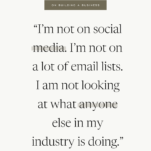
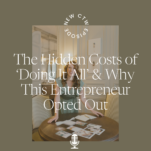
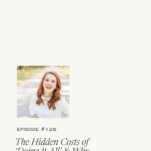
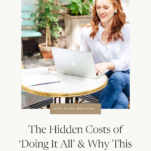

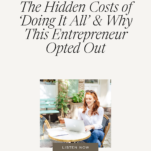

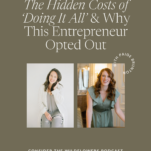
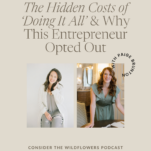
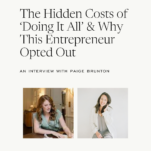
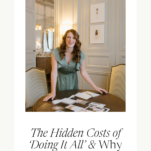
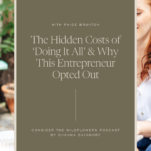
And if you found this helpful, share with your friends!